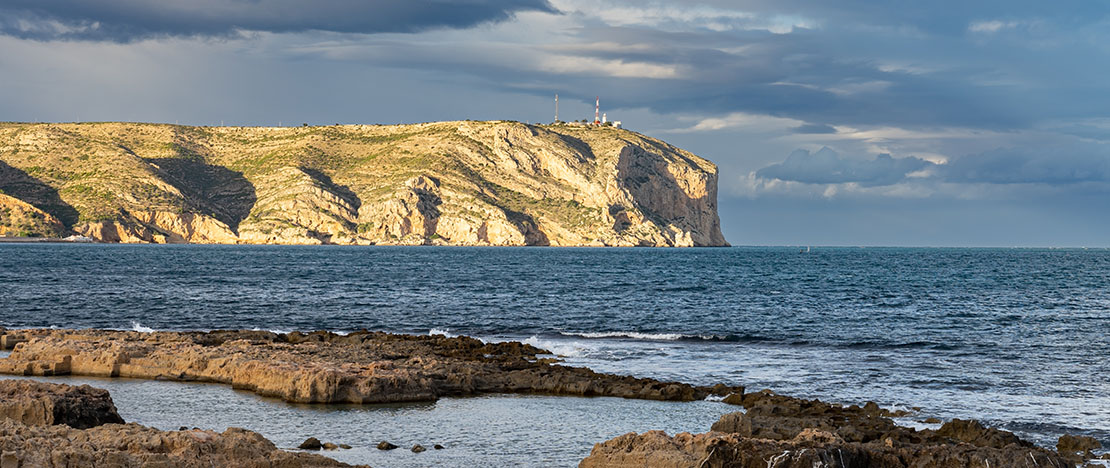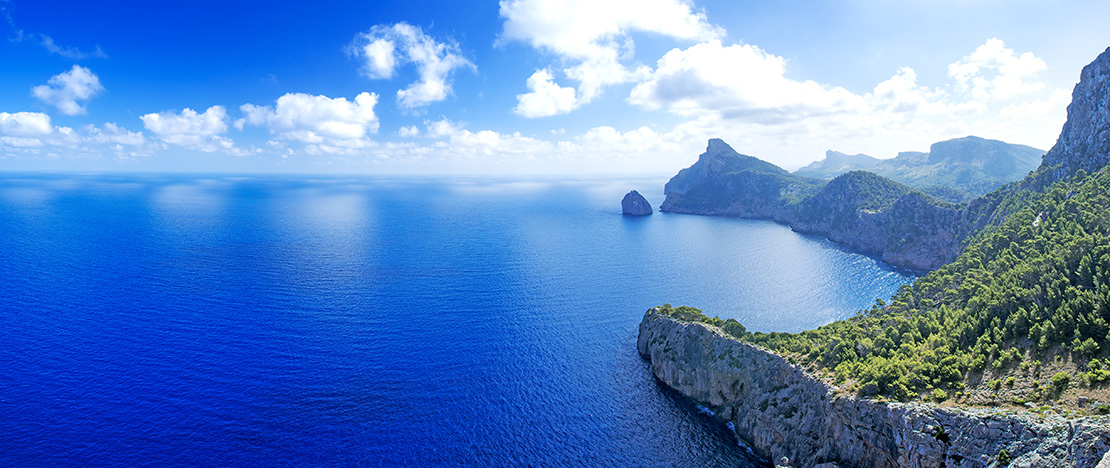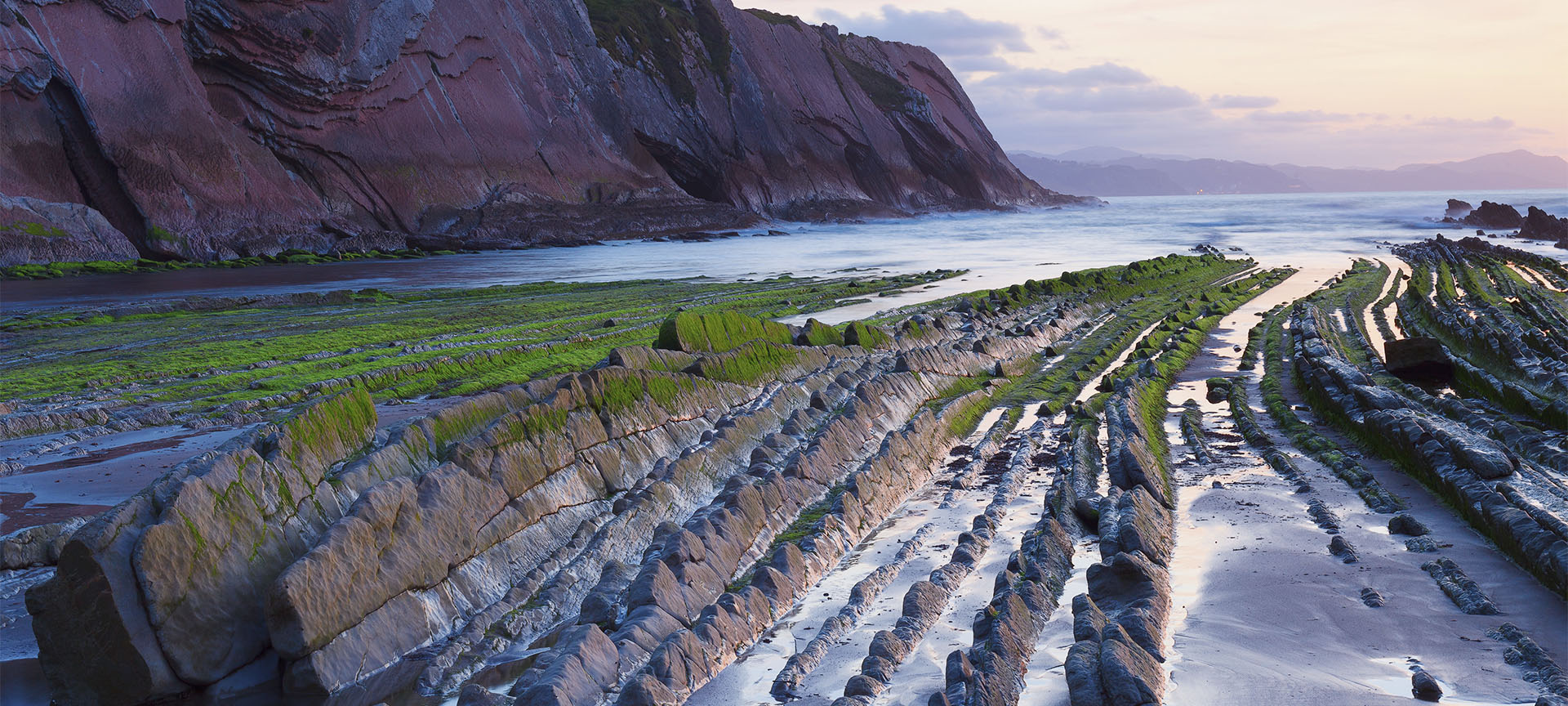
Spain's cliffs: one of a kind, dazzling views at your feet
Imagine looking out onto the horizon at sunset from the edge of an imposing cliff. This sensation of freedom and connection with nature in Spain is waiting for you atop one of the country's most famous cliffs. Here a few of the most spectacular and beautiful examples. Enjoy the sensation of visiting places that seem out of reach.
Debe activar Javascript para poder utilizar este servicio
-

Vixía de Herbeira
Did you know that some of Europe's highest cliffs are in Spain? To catch a glimpse of them, you will need to head to the province of A Coruña, in Galicia. Specifically, they are located in the Capelada mountain range, between Cariño and Cedeira and just a stone's throw from Cape Ortegal. Measuring 620 metres in height and plunging towards the sea at a gradient of more than 80%, these are said to be the highest cliffs in continental Europe. And here's an interesting fact: their name comes from the stone guardhouse (vixía) that has been preserved to this day and that centuries ago was used to spot pirate ships heading for the coast. When you arrive there, you will find yourself at the meeting place of the Atlantic Ocean and the Cantabrian Sea. The force of the waves colliding against the emerald green coast will mesmerise you. Make sure not to miss the opportunity of visiting the Cape Ortegal lighthouse or the church of Santo André de Teixido. This sanctuary, one of the most revered in Galicia, is on the way up the Sierra da Capelada.
-
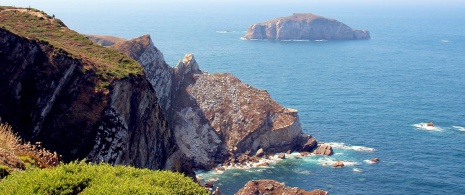
Cabo Peñas
Also on the Cantabrian coast, at the northernmost tip of Asturias, is Cabo Peñas, between Gijón and Avilés. Its steep cliffs climb 100 metres into the air and its lighthouse built in 1852 are positively dreamlike. Here, you'll feel a complete connection with nature. A wooden walkway leads you to an area with interpretive panels that will provide you with more information about this protected natural space. What's more, you can visit the marine environment interpretation centre located close to the lighthouse.Make sure not to miss the opportunity to discover fishing villages including Candás and Luanco, which is also home to the Maritime Museum of Asturias.
-

Flysch cliffs
Continuing on your trip across northern Spain will bring you to Euskadi, and specifically the coastal strip between Deba and Zumaia, which plays host to an impressive geological phenomenon. Flysch cliffs: eight kilometres over which the mountains descend abruptly towards the sea and where, on account of the impact of erosion generated by the waves for thousands of years, part of the region's geological history has been exposed in the form of a number of interesting “folds” in the rock. The material locked into these cliffs hides a wealth of information, for example, about the extinction of the dinosaurs. Heading up to the Hermitage of San Telmo is highly recommended: from here, you will get the best panoramic view of the cliffs and over the stunning Itzurun beach. What's more, you can sign up for guided geological tours and take boat rides to see this phenomenon up close and personal. Did you know? These landscapes appeared in Game of Thrones?
-

Cap de Creus
Next stop on our trip: Catalonia. More specifically, the surprising landscape of Cap de Creus Nature Reserve. This coastal area is home to impressive cliffs enveloped by the wind and the salty air. Its iconic lighthouse is well worth a visit, which serves as a viewpoint and the perfect starting point for heading off on different routes. If the weather is good and you feel like taking a dip, then head to the Playera and Fredosa beaches, which are both close to the lighthouse and boast incredible crystal-clear waters. If you are a scuba diving fan, this area is the perfect spot for you. Make the most of your visit to see one of Cap de Creus' most important monuments: the monastery of Sant Pere de Rodes, where you will find information regarding routes and activities throughout the nature reserve. Just an hour and a half away by car, in inland Girona, are the famous basalt cliffs of Castellfollit de la Roca.
-

Cabo de San Antonio
Our next suggestion takes us to Cabo de San Antonio, nestled between the towns of Dénia and Xàbia (Alicante). Get ready to feel dizzy, as these cliffs measure 160 metres in height. However, the reward is well worth it: stunning views out over the Mediterranean and, on clear days, the island of Ibiza is visible on the horizon. At its feet is the marine reserve of Cabo de San Antonio, which is of high environmental interest due to its Posidonia meadows.Make the most of your visit to the area to visit the 15 viewpoints around Xàbia that lead to the beautiful Granadella cove or to visit Moraig cove and its famous Cova dels Arcs: a magical corner for taking snapshots at sunrise.
-
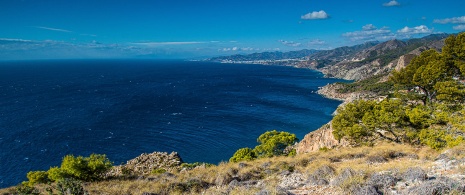
Maro-Cerro Gordo cliffs
Now set your sights on Andalusia, specifically, the area located between the beautiful coastal towns of Almuñécar (Granada) and Nerja (Malaga). It is home to the Maro-Cerro Gordo nature reserve: home to cliffs measuring 75 metres in height. On a very clear day, if you look out from one of its viewpoints, you can make out the coast of Africa. What's more, this area is especially recommended for scuba divers, as its waters are home to a variety of caves, including the Genoveses or La Cajilla caves.One option that might be appealing is to take a boat ride to get closer to the inaccessible, most beautiful spots and hopefully get a glimpse of the dolphins that cross the Mediterranean.
-

Cabo de Formentor
When making your travel plans, make sure not to overlook the northernmost point of the island of Majorca. A narrow, winding road takes you to the magical Formentor lighthouse, 200 metres high (bear in mind that in summer, it can only be reached by bus). From there, the views over the Tramuntana mountain range and the Mediterranean Sea are truly one of a kind.Along the way, you can stop at different viewpoints. The area also hides another secret: Formentor beach, boasting spectacular crystal-clear waters. If you can choose a time of day to visit the area, then choose sunset, when the reddish colours envelop everything.
-

Los Gigantes
These cliffs in western Tenerife (Canary Islands) truly live up to their name: huge and spectacular vertical walls measuring up to 600 metres in height that will transport you to another planet. There is a reason why the ancient inhabitants of the island, the Guanche aborigines, dubbed these cliffs the “walls of hell.”But rather than being hellish, this natural space is actually a paradise, the perfect place for a little kayaking or diving, as its seabed are home to great biodiversity. Taking a boat ride to admire these “giants” in all their grandeur and to spot whales and dolphins is also highly recommended.





